The honey locust tree is a rural and urban pioneer. While it's more likely to sprout naturally in country fields, this tree is one of the most popular choices for sidewalks, city parks and parking lots, because it stands up just fine to road salt and compacted soil, and it's tolerant of soil that's in very bad shape in general.
We haven't chosen the honey locust based on its strength alone; it has a gorgeous form, provides wonderful dappled light, sports some beautiful and delicate leaves and has year-round interest. This tree is fast growing and should live to 100 (maybe even 120). I am recommending the thornless version,
Gleditisea triacanthos inermis, as the regular honey locust's thorns are wicked.
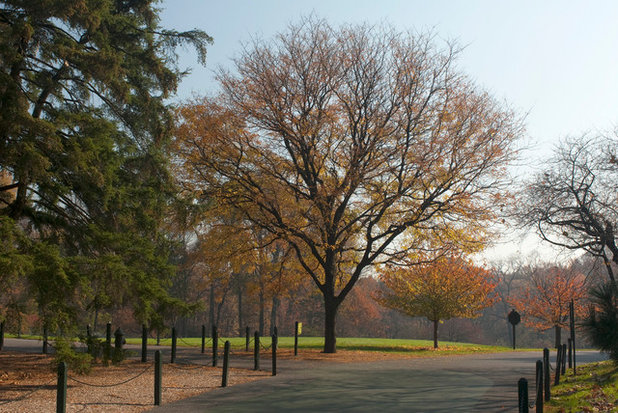
The New York Botanical Garden
Botanical name:
Gleditisia triacanthos inermisCommon name: Honey locust (thornless)
USDA zones: 4 to 8 (find your zone)
Water requirement: Very little beyond initial planting
Light requirement: Full sun
Mature size: 60 to 100 feet tall; 50 feet wide
Benefits and tolerances: The honey locust tolerates drought, flooding and heat. It can thrive in poor soils, including compacted urban soils; it can even stand up to road salt. It is not tolerant of shade and several pests.
Seasonal interest: Fragrant yellow-green flowers in spring; bright green compound leaves in summer; yellow autumn color; dark, furrowed bark to admire in winter
When to plant: Fall
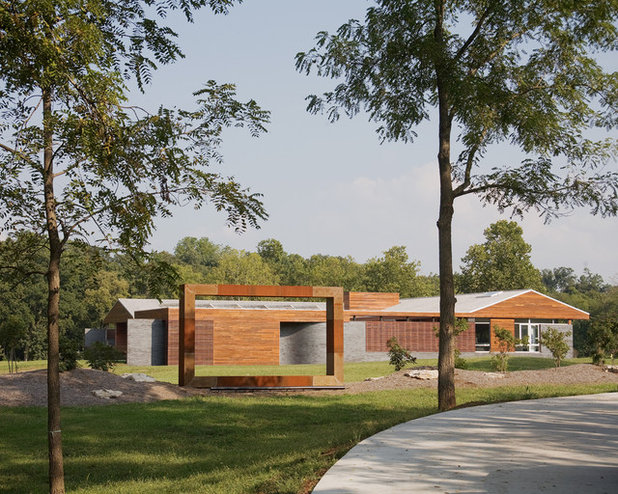 Distinguishing traits.
Distinguishing traits. While honey locusts are known for their wicked thorns, this thornless cultivar is much more user friendly. Honey locusts are best known for their beautiful dappled light. They have deeply furrowed, dark gray or blackish bark. They are fast growing and have straight single trunks, and their silhouettes are oval and quite full.
Note: Honey locusts also have seed pods, which drop. Some people consider them messy.
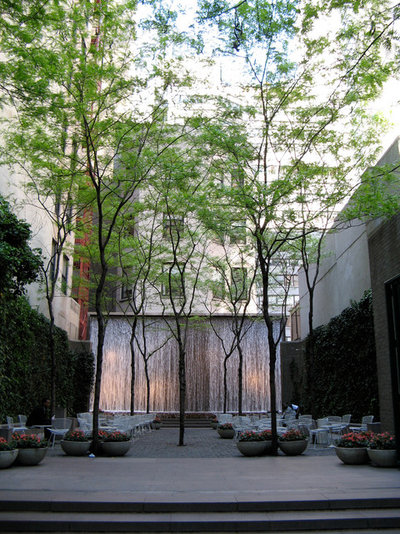 How to use it.
How to use it. One of my personal favorite uses of honey locust trees is in Paley Park in New York City. The trees soften all of the straight modern lines of this beautiful pocket park. Their compound leaves provide filtered light to the park users below. Because of their forms and their tolerance of stressful urban conditions, they are one of the most popular street trees.
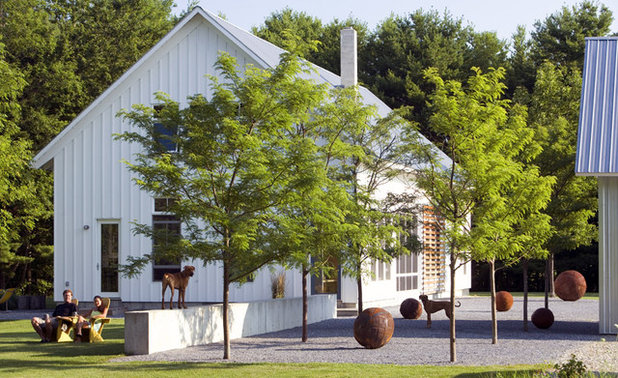
Wagner Hodgson
Honey locusts are a popular choice for courtyards and patios too. Because they are a pioneer species in agricultural fields, they can lend a rural feel to a design, like in this photo. Also, you can grow shade-tolerant grasses and plants underneath them because of their dappled light.
Honey locusts are commonly used in windbreaks, and many animals enjoy munching on their seedpods.
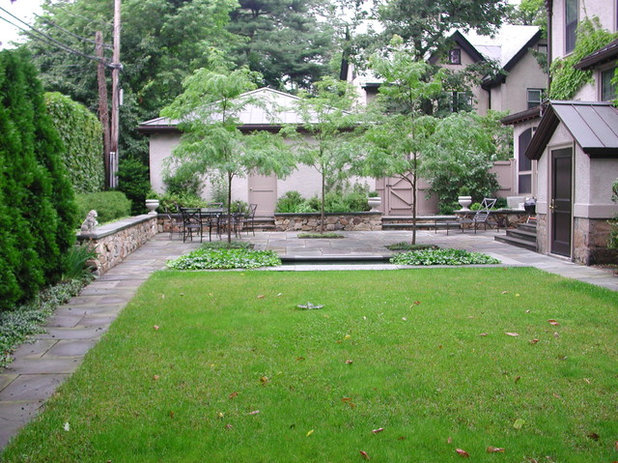 Planting notes:
Planting notes:- Pick a spot that gets full sun and keep in mind that this tree will drop pods, so you probably don't want to plant it over a fountain or pool.
- Dig a hole that is as deep as the root ball and about two to three times the width of the root ball.
- Shake out the loose dirt from the root ball and place it in the hole.
- Fill the rest of the hole with dirt and pack it down.
- Water thoroughly.
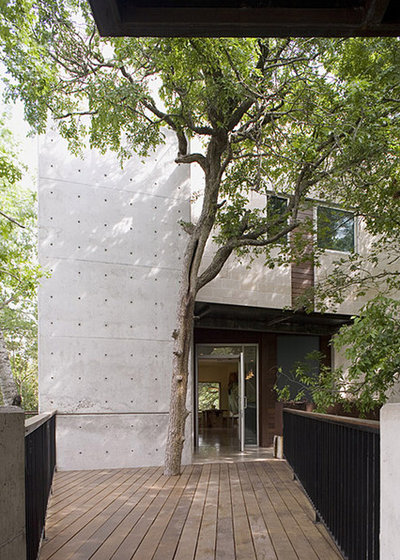
Dick Clark + Associates
Fun facts:• The pulp of the honey locust can be fermented into a strong alcohol.
• The honey locust does not actually produce any honey; it got its name from the the sticky residue that forms inside of its seedpods.
More great design trees





